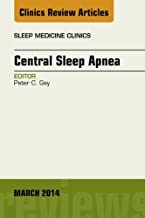Central Sleep Apnea
Resources for Patients and Caregivers
Central sleep apnea is a disorder in which your breathing repeatedly stops and starts during sleep. Central sleep apnea occurs because your brain doesn’t send proper signals to the muscles that control your breathing.
Cluster Number:
Wiki Number: 11-Central Sleep Apnea
Diagnosis: The brain accidentally does not have the lungs breathe in, losing fresh oxygen
US Patients:
World Patients:
Sex Ratio:
Age Onset:
Brain Area: pre-Botzinger complex – in the cerebellum which controls the regularity of breathing
Symptoms: Gaps in breaithing can damage or kill brain cells due to lack of fresh oxygen.
Progression:
Causes:
Medications:
Therapies: Bi-pap and C-pap breathing machines help the regularity of breathing.
Youtube Video: Understanding Mechanisms of Central Sleep Apnea
Amazon or libarary Book: Central Sleep Apnea
Click the book to link or order from Amazon.

